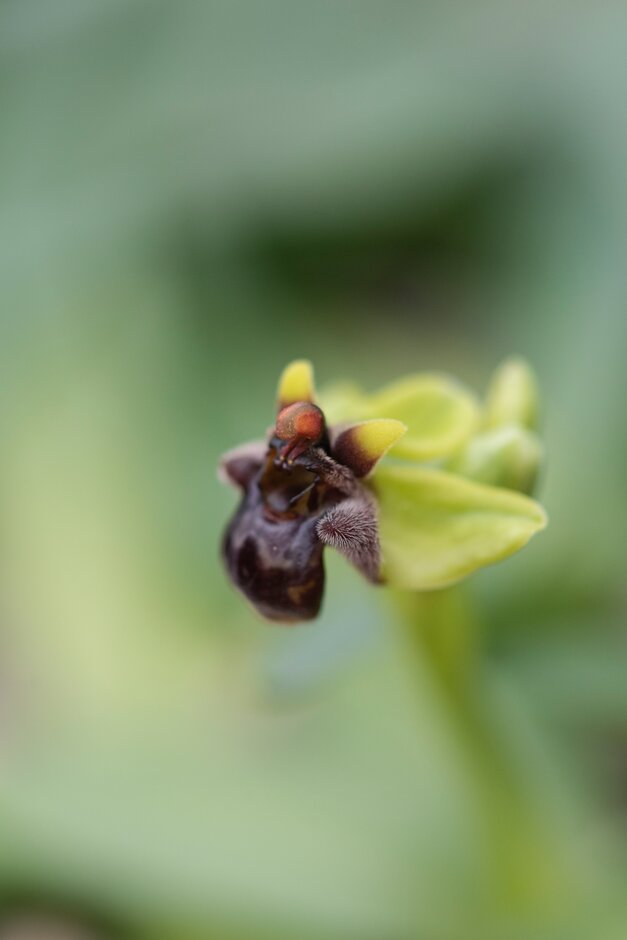Ophrys bombyliflora
bumble bee orchid
A terrestrial orchid with a rosette of oblong dark green leaves and flower spikes up to 35cm. Flowers may appear from February to April and are a mixture of oval, green sepals and triangle-shaped petals flushed with bronze. It has a three-lobed brownish velvety lip, resembling a bee. The species is very common in Portugal and the Algarve where it thrives in coastal areas with sandy soils containing crushed shells, and on waste ground and abandoned farmland
Size
Ultimate height
0.1–0.5 metresTime to ultimate height
2–5 yearsUltimate spread
0–0.1 metreGrowing conditions
Moisture
Well–drainedpH
Alkaline, NeutralColour & scent
| Stem | Flower | Foliage | Fruit | |
| Spring | Green Bronze Brown | Green | ||
|---|---|---|---|---|
| Summer | Green Bronze Brown | |||
| Autumn | ||||
| Winter | Green |
Position
- Partial shade
Aspect
East–facing or West–facing
Exposure
Exposed or Sheltered Hardiness
H6Botanical details
- Family
- Orchidaceae
- Native to GB / Ireland
- No
- Foliage
- Deciduous
- Habit
- Columnar upright
- Genus
Ophrys are tuberous terrestrial orchids producing a basal rosette of leaves and upright flowering stems with small leaves and spikes of two to 12 flowers, the lower lip often resembling a foraging insect
- Name status
Correct
- Plant range
- Mediterranean
How to grow
Cultivation
Best in well-drained, sandy or gritty, humus-rich, neutral to alkaline soil in partial shade. Plant dormant tubers in autumn, at least 5cm deep. Can be naturalised in fine turf. V
Propagation
Propagate by separating offsets in autumn
Suggested planting locations and garden types
- Cottage and informal garden
- Wildflower meadow
- Wildlife gardens
- Banks and slopes
- Flower borders and beds
Pruning
Deadhead as flowers fade
Pests
Diseases
Generally disease-free
Get involved
The Royal Horticultural Society is the UK’s leading gardening charity. We aim to enrich everyone’s life through plants, and make the UK a greener and more beautiful place.
